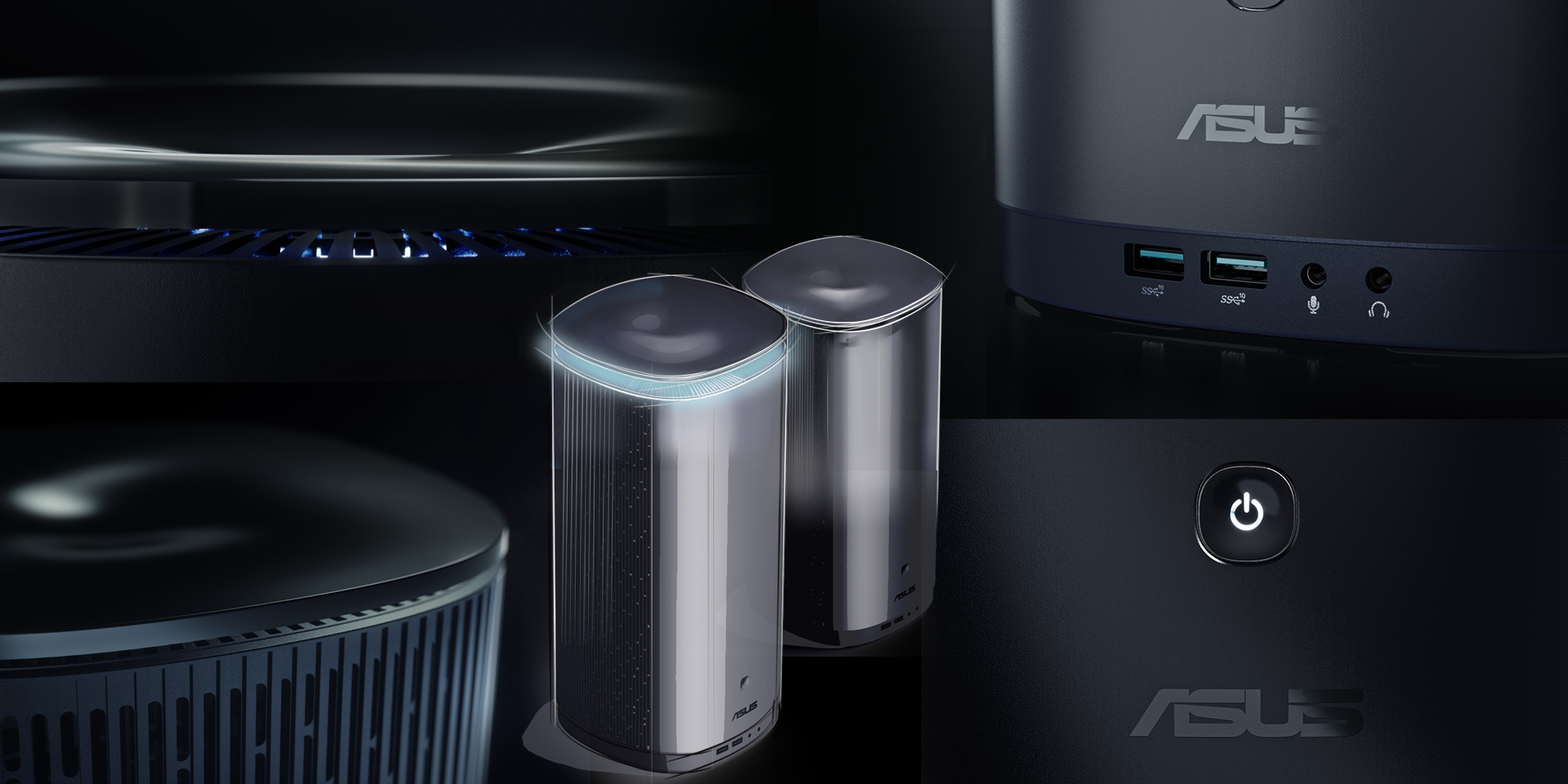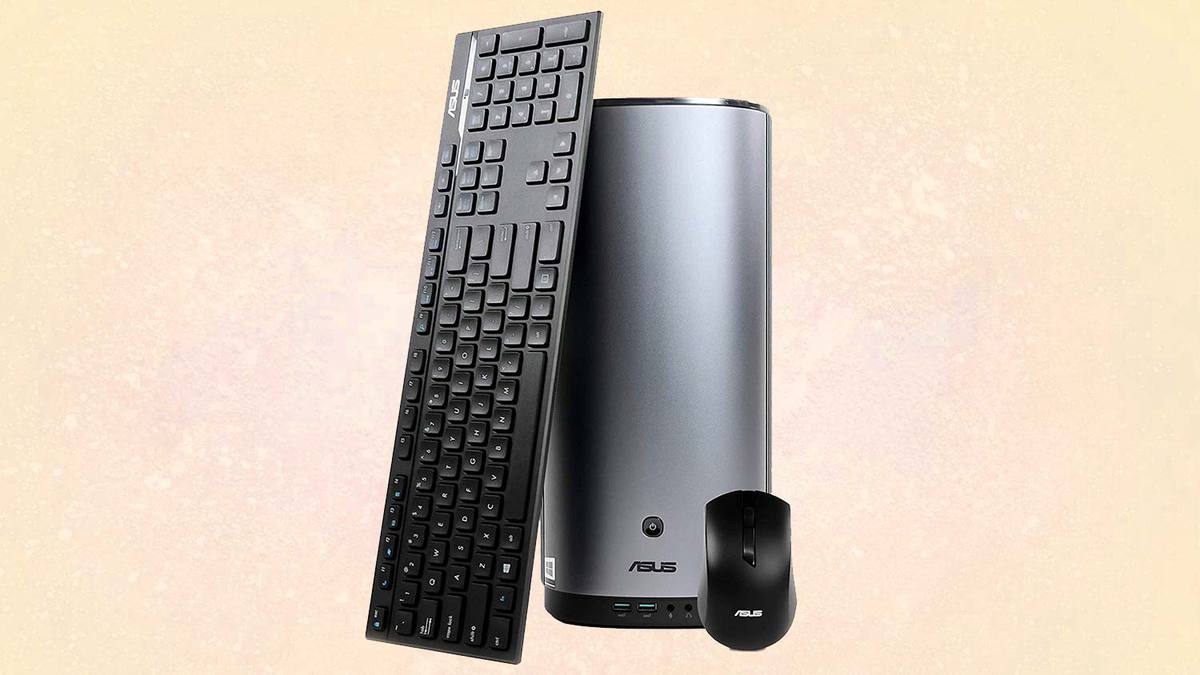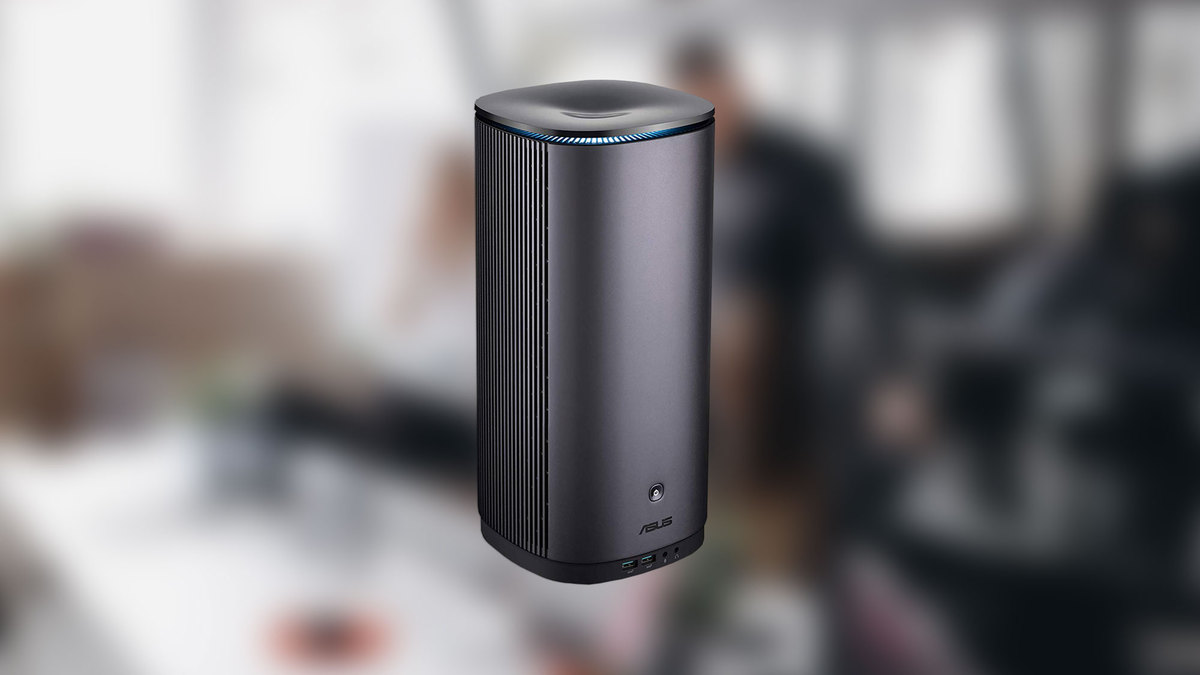Tom's Guide Verdict
When you need workstation-class performance, the Asus ProArt PA90 delivers, with killer hardware and a sleek design.
Pros
- +
Desktop-class workstation hardware with a Core i9-9900K CPU and Nvidia Quadro P4000 graphics
- +
Some upgradability built in
- +
Category-leading performance
- +
Interesting vertical design with dynamic airflow & water cooling
Cons
- -
Tall mini-tower stretches the definition of mini PC
- -
No HDMI ports
- -
Bulky dual power bricks
Why you can trust Tom's Guide
While many of the best mini PCs we review are designed for unconventional uses — tucked behind TVs as home-theater streaming sources or slipped into a pocket to provide a superportable desktop — sometimes, you just want a desktop that's not so big. And sometimes, you want that little desktop to still provide full-size (or even supersize) power for demanding tasks. Enter the Asus ProArt PA90 Mini PC ($2,899 as tested), a compact workstation with a small footprint and big processing power.
This is a machine for serious professionals. With Nvidia Quadro graphics and independent software vendor (ISV) certification for many demanding uses, the PA90 is a workstation aimed at pros, from its eight-core processor to its dual-drive storage. This is performance for the most-demanding uses: creating content, running engineering simulations and rendering 3D models. You'll pay a lot for this power, but it's in such a compact design that, pound for pound, it's the most powerful mini PC we've seen yet.
Asus ProArt PA90 price and availability
The Asus ProArt PA90 comes in two configurations. Our review unit (the PA90-M9012ZN) is the higher-powered of the two; it comes outfitted with an Intel Core i9-9900k processor, 32GB of RAM, Nvidia Quadro P4000 graphics and a pair of storage drives — a 512GB M.2 PCIe solid-state drive and a 1TB 2.5-inch 7,200-rpm hard drive. This unit sells for $2,899.
The other model (model number PA90-M7021ZN) is equipped with a more modest 3.6-GHz Intel Core i7-9700K eight-core processor and 16GB of memory, but otherwise is the same, with 1.5TB of storage and an ISV-certified Nvidia Quadro P4000. It sells for $2,699.
Unlike most mini PCs, which repackage laptop-grade processors for desktop use, the PA90 not only comes with a desktop-grade processor, but is also upgradable. If you're willing to open up the PA90's compact chassis and get past the water cooler and graphics card, you'll find a latching FCLGA1151 socket cover. You can also add memory, bumping up from the included 16GB or 32GB of DDR4 RAM to 64GB.
Asus ProArt PA90 design
The PA90 is a workstation-class mini PC, but the mini aspects might be somewhat relative. Measuring 6.9 x 6.9 x 14.4 inches, the PA90 is more than 14 inches tall with a nearly 7-inch-square footprint. That's about the same amount of space as taken up by 10 Mac mini desktops stacked on top of each other. Still, at that size, and weighing just 12.7 pounds, the Asus ProArt PA90 is considerably smaller than any traditional desktop tower.
Design-wise, the closest cousin to the Pro Art PA90 in the compact desktop world is likely Apple's cylindrical Mac Pro from 2013. The Asus PC has a vertically oriented motherboard, along with a full Nvidia Quadro graphics card and a liquid cooling system. That's a lot of processing muscle, and the cooling to support it, but the result is still confined to a relatively small footprint, albeit one that is taller than many of the mini PCs we've reviewed in the past.
The PA90 looks sleek, with rounded corners and a dark, gunmetal-gray finish across the plastic chassis. One dramatic and distinct feature is the top of the desktop chassis, a sculpted panel that rises up to expose top-mounted air vents. When greater airflow is needed, the panel rises up farther to allow more air through for better cooling. The exposed vents glow with a cool blue light, but when the system is not in use, the lid clamps back down to cover the vents.
One thing you may not expect to see, though not unheard of on powerful systems, is the set of twin power adapters on this PC. The PA90 comes with two separate power bricks, each with a slightly different power output. One puts out 180 watts; the other puts out 230 watts, and you need both to get full performance from the machine. That does add some bulk to an otherwise-compact workstation, as each of these power bricks is larger than some of the smallest mini PCs we've reviewed.
Asus ProArt PA90 ports
On the front of the desktop, you'll find two USB 3.0 ports, a headphone jack and a microphone port. The front-facing positioning of these ports makes it easy to attach storage or another peripheral, and whether you prefer standard headphones or a headset that includes a microphone, you'll be set with the jacks you need.

On the back of the PA90, you'll find two more USB 3.0 ports, two Thunderbolt 3-over-USB-C ports, a Gigabit Ethernet connection, a second audio jack and four DisplayPort connections that feed directly from the Nvidia Quadro GPU inside and round out the port selection.
What you won't find, interestingly enough, is a single HDMI port. While the DisplayPorts included on the PA90 are arguably the superior connection for a workstation, this setup does mean that if you're using an HDMI-connected monitor, you'll need an adapter.
A pair of screw-on connectors lets you attach an included Wi-Fi antenna, which is a black, stylized wedge of plastic. This antenna comes with a little stand and can be set up on or near the desktop to give you some flexibility in positioning the antenna.
Asus ProArt PA90 keyboard and mouse
The system comes with a wireless keyboard and mouse, which come in handy if you're buying a completely new system, since you'll need to buy only a monitor. However, if you personalize your workspace, there's a good chance you'll have a preferred keyboard and mouse anyway.
The included keyboard is good enough for what it is, a silicone-dome-switched wireless keyboard. It shares a wireless adapter with the accompanying mouse, so you can use them both without monopolizing USB ports.

Asus ProArt PA90 performance
Our review unit of the PA90 came outfitted with a powerful Intel Core i9-9900k processor, a 3.6-gigahertz beast with eight processing cores. Unlike most mini PCs, which repackage laptop-grade processors for desktop use, the PA90 comes with a desktop processor, complete with a socket for potential upgrades. This is paired with 32GB of DDR4 RAM, though the system can be configured with up to 64 gigabytes and optional Intel Optane memory. An Nvidia Quadro P4000 graphics card provides ISV-certified power for rendering, and storage is handled by a 512GB solid-state drive and 1TB hard drive.
Those specs combine to offer the most impressive setup we've seen among mini PCs, but they also highlight that this machine toes the line between a true mini PC and a small-form-factor desktop. Which category it actually falls into is largely academic. It's small, but it packs big processing power, and that's what you're buying it for.
When we ran our file-transfer test, to see how quickly the system would copy a 4.97GB folder of mixed-media files, the PA90 zipped through the task in 2.89 seconds, for a rate of 1,760.99 MBps. That's one of the fastest results we've seen on any mini PC, beating the gaming-oriented Intel Hades Canyon NUC (310.6 MBps) and even topping the HP Z2 Mini G4 workstation (1,017.8 MBps). The only system to offer better speeds was the category-leading 2018 Apple Mac mini (2,544 MBps).
With this system's six-core Intel Core i9 processor and 32GB of RAM, we had no doubt that the PA90 would do well in general-performance tests like Geekbench 4.1, and it did indeed, scoring 32,383 points. That's the best we've seen by a huge margin. The Intel Hades Canyon NUC (Intel Core i7-8809G and 16GB RAM) delivered only 17,683 points in the same test, and the workstation-grade HP Z2 Mini G4 (Intel Xeon E-2176G, 32GB of RAM) scored 23,921 points, the previous category best.
And compared to something more basic, like the Mac mini, which was tested using the slightly older Geekbench 4.0, the Asus PA90 scored 30,175 points, giving it a huge lead over the Mac mini's 13,666 points (Intel Core i3-8100B and 8GB of RAM).
For those looking for more metrics around processing power, we also tested the system in Cinebench, where the Core i9 processor powered through to a score of 4,649 points. And when we fired up HandBrake to do an encoding test, the PA90 reencoded a copy of Tears of Steel in 5 minutes, 48 seconds, which is remarkably fast for converting a 4K movie to 1080p; even high-end systems frequently take 10 minutes or more.
Asus ProArt PA90 graphics performance
To test the Nvidia Quadro P4000 graphics card, we put the system through some of our gaming tests, even though it's not necessarily built with gaming in mind.
We ran our low-end gaming test, Dirt 3, on the PA90 as a baseline comparison with other mini PCs. The results offer a pretty good illustration of how the graphics power stacks up. At 1080p, the Asus finished the test with an average of 326 frames per second (fps). That's about double what the HP Z2 Mini G4 scored (166 fps), even though it also boasts Nvidia Quadro graphics (albeit the lower-powered Quadro P1000 model). It was the same story when we dialed the resolution up to 4K; the PA90 cranked out 156 fps, while the HP Z2 Mini G4 managed 51 fps, an impressive score in its own right.
When we ran the Steam VR test, which measures a systems readiness and capability for rendering in VR, the PA90 scored a very high 9.6 out of a possible 11 points. The compact, gaming-oriented Intel Hades Canyon NUC scored 4.6 (Medium). The HP Z2 Mini G4 got no score, instead receiving a message that said we should upgrade our graphics card.
In the graphics-intensive 3DMark Pro, we ran one of the more demanding tests, Fire Strike. In this evaluation, the PA90 scored 13,897, as much as the HP Z2 Mini G4 (4,609 points) and the Intel Hades Canyon NUC (8,451) combined. However, it is worth noting that these scores are still relegated to the mini PC category and serious gaming desktops average much higher, scoring 10,000 points or more.
Bottom line
Not everybody needs the kind of power that the Asus ProArt PA90 workstation offers. But if you're regularly editing 4K footage, building sophisticated product designs, 3D modeling or otherwise pushing the envelope beyond what a standard desktop can do, then the Asus PA90 is built to not only give you the muscle to get things done, but to also speed up your workflow as you go. With category-leading performance and a design that even allows some upgrades down the line, the Asus ProArt PA90 is the workstation mini PC we recommend — assuming you can afford it.
For a smaller system with a more reasonable price, look to the HP Z2 Mini G4 ($2,149 as reviewed), which also offers many of the benefits of a workstation desktop, and even our top-spec model sold for less than the Asus. This HP still gives you a beefy processor and ISV-certified graphics, but in a package that can be stashed in a drawer or mounted on the backside of a monitor.
With its slightly better price and more-flexible configuration options, the HP Z2 Mini G4 keeps its top spot as our favorite workstation mini PC. But if you want more power, consider the Asus ProArt PA90; it's the most powerful workstation of its size, and sometimes that's worth paying for.
Brian Westover is currently Lead Analyst, PCs and Hardware at PCMag. Until recently, however, he was Senior Editor at Tom's Guide, where he led the site's TV coverage for several years, reviewing scores of sets and writing about everything from 8K to HDR to HDMI 2.1. He also put his computing knowledge to good use by reviewing many PCs and Mac devices, and also led our router and home networking coverage. Prior to joining Tom's Guide, he wrote for TopTenReviews and PCMag.


